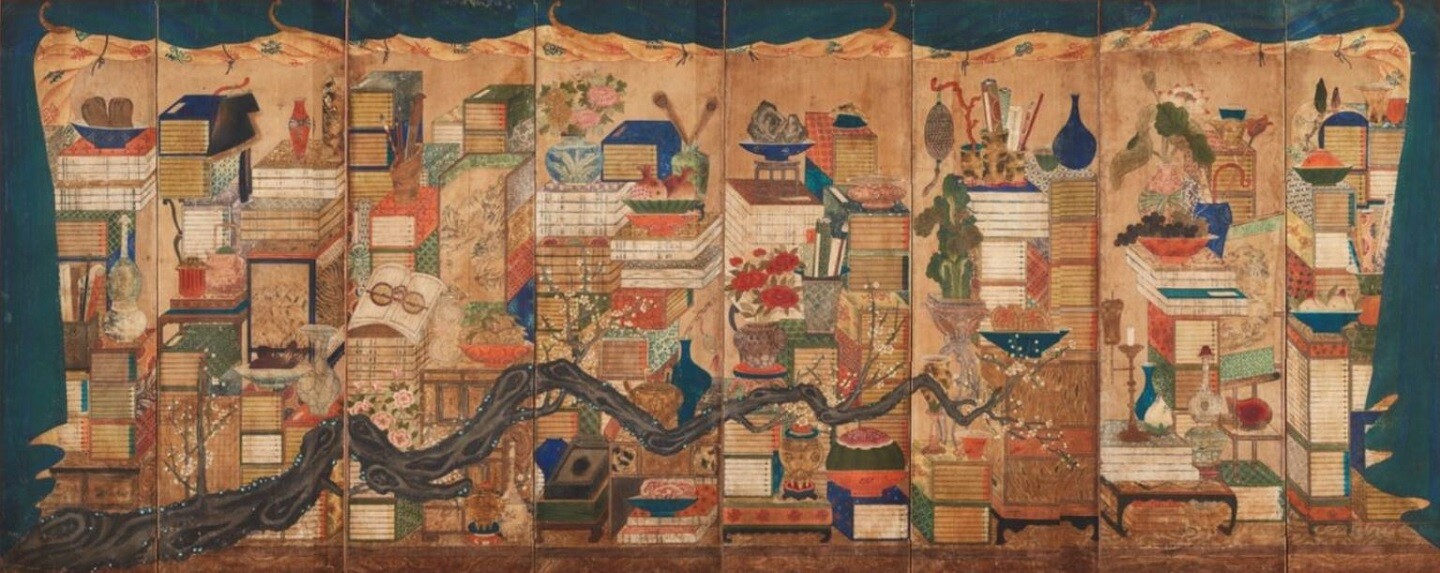June 1–September 25, 2022
313 Gwangmyeong-ro, Gwacheon-si
Gyeonggi-do
13829
Korea
The National Museum of Modern and Contemporary Art, Korea (MMCA; director Youn Bummo) presents a special exhibition of Prayer for Life: Korean Polychrome Painting, from June 1 to September 25, 2022, at MMCA Gwacheon.
Encompassing folk, court, religious, and documentary paintings, the Korean Polychrome painting has played a number of roles in the lives of Korean people, warding off evil spirits, attracting good fortune, delivering moral messages, and documenting important historical events. While polychrome painting takes up a significant portion of traditional Korean paintings, it has long been excluded from mention in Korean art history partly because mainstream art history as established post-Joseon Dynasty focused on ink-and-wash landscape works by literary artists. The post-modern concept of fine art largely disregarded any type ofpainting produced for decoration or blessing. As the MMCA’s first exhibition to highlight Prayer for Life: Korean Polychrome Painting seeks to correct this imbalance in Korean art history.
This exhibition focuses on the functions of traditional polychrome painting, showcasing around 80 works from diverse genres classified by function including folk and decorative court paintings produced between the 19th and early 20th centuries and modern folk paintings, craftworks, designs, calligraphy, and other types of works produced since the late 20th century. The participants comprise some 60 artists in fields including Venerable Seongpa, the 15th supreme patriarch of the Jogye Order of Korean Buddhism, Kang Yobae, Park Daesung, Park Saengkwang, Shin Sangho, Ahn Sangsoo, Oh Yoon, Lee Jongsang, Hahn Aikyu, and Hwang Changbae. Ten modern folk painters including Song Kyutae, Oh Soonkyung, Moon Sunyoung, and Lee Youngsil have also submitted entries, with 13 works including those newly commissioned to three of the painters to be unveiled for the first time.
The exhibition’s six sections explore the four main functions of traditional paintings throughout Korean history: byeoksa (defeating evil), gilsang (auspicious signs), gyohun (edification), and gamsang (appreciation). The first section “A Greeting” starts with film director Stone Johnston’s video piece Sublimation, which explores Cheoyong masks emblematic of Korean byeoksa culture. The second section “At the Doorstep: Defeating Evil” also introduces images of defeating evil, which was considered the first step togilsang. Beginning with Shin Sangho’s Totem, this section features works containing traditional symbols of byeoksa such as Nine Dragons Bathing the Buddha (Clouds and Nine Dragons), The Five Guardian Deities (Gods of Five Cardinal Points), Tiger and Magpie Kkachi Horangi (Magpie and Tiger), and Venerable Seongpa’s Fierce Tiger Woke Up Sugimaenghodo (Awoken Tiger) next to Hahn Aikyu’s Columns and Oh Yoon’s Dancing Tiger Song of Sword. The third section “In the Garden: Ten Longevity Symbols and Bird-and-Flower Paintings” explores the theme of gilsang, presenting related traditional images ranging from late 19th-century paintings of ten symbols of longevity and peonies to recent paintings and videos that expand on the meaning and representation of gilsang. Among the featured works in this section are Sipjangsaengdo (Ten Longevity Symbols Folding Screen), Kim Hyekyoung’s video work Auspicious Sign, Chun Hyucklim’s A Hundred Objects Bringing Good, Kim Chonghak’s Metamorphosed peony, Son Yuyeong’s Peony Garden, and Hong Jiyoon’s Standing on the hollyhock field. Moving on to the high-ceiling open space of the Main Hall, the fourth section “Five Cardinal Colors” comprises two installations: Kim Shinil’s In Between Five Colors—Space, which experiments with the five cardinal colors, and Lee Junggyo’s Four·Direction·Tiger, comprised of four giant tigers. The fifth section “At the Study: Munjado, Chaekgado, and Documentary Paintings” takes viewers past the garden and into a study to unravel stories associated with books and documents. This section features an array of munjado (pictorial Ideographs) by eight artists, an array of chaekgado (paintings of books and stationery) including Chaekgeorido with Plum Blossoms, an eight-piece folding screen showcased for the first time at this exhibition, and documentary paintings that stereoscopically illuminate a period of upheaval in Korean history. The sixth and final section, “The Mountain over the Wall: Landscape Painting,” guides viewers out of the study and back into the garden to present paintings of landscapes that unfold beyond the fence. This is a comprehensive look at the wide variety of sansuhwa (landscape painting), a genre distinguished from other polychrome paintingas “paintings for the purpose of appreciation” for wide popularization on the Korean mainstream art scene.
This exhibition is also the first by the MMCA to be virtually reproduced on the online exhibition space Digital Twin Museum, offering an onsite experience to audiences around the country with limited access to the exhibition via personal computers and smartphones. As a specialized digital museum unrestricted by time and space, the Digital Twin Museum is to provide various services in addition to online exhibitions.
Youn Bummo, director of the MMCA, notes, “This special exhibition was organized to highlight the roles that various Korean traditional Polychrome painting played up to modern times and their status in the Korean contemporary art market. I hope that this exhibition serves as an opportunity for Polychrome painting to be newly assessed and for the history of Korean painting to achievebalance.”


